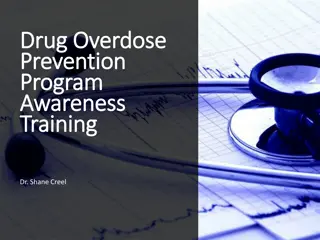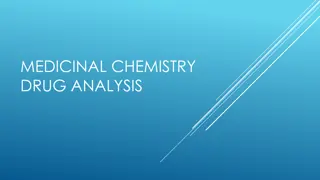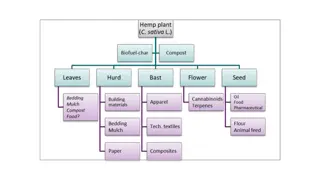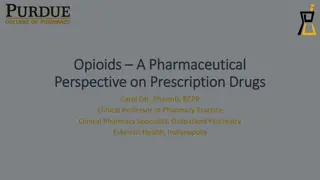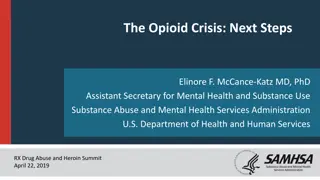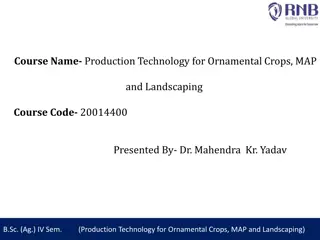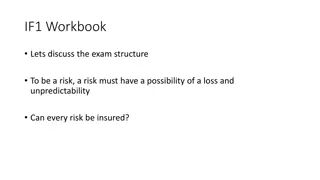Understanding Heroin: Production, Types, and Risks
Highly addictive and powerful, heroin is derived from the poppy plant and goes through a complex process of refinement to morph into its final form. Various methods are used globally to produce heroin, including the dangerous black tar variant. Different types of heroin, such as gunpowder and China white, present varying risks and consistencies. The drug comes in different forms and is often packaged in protective stamp bags. Understanding the production, types, and risks associated with heroin is crucial due to its severe impact on individuals and communities.
Download Presentation

Please find below an Image/Link to download the presentation.
The content on the website is provided AS IS for your information and personal use only. It may not be sold, licensed, or shared on other websites without obtaining consent from the author. Download presentation by click this link. If you encounter any issues during the download, it is possible that the publisher has removed the file from their server.
E N D
Presentation Transcript
HEROIN What is it? Picture showing image of heroin.
WHAT IS IT AND HOW IS IT USED? Highly addictive powerful drug. It is derived from the resin of the poppy plant which is first refined into opium and then morphine before heroin is created. Production begins in the poppy fields of Afghanistan, Pakistan, India, Myanmar, Laos, Columbia, Mexico and Guatemala. Afghanistan produces the bulk of the world s opium. This is because of economics. The average farmer can see an annual return of 3,000 compared with 1,000 for a crop of wheat.
HOW IS IT CREATED? Opium is created by making an incision in the poppy seed pod which contains white milky liquid. This is dried, formed into balls and sold as raw opium. The raw opium is mixed with a calcium solution and allowed to settle. The top layer, containing morphine, is siphoned off and placed in a barrel where it is mixed with additional chemicals causing the morphine to fall to the bottom of the barrel. The morphine is then removed and dried which forms a morphine base used to produce heroin. Several more steps and chemical reactions take place before the fine white heroin powder is made.
OTHER METHODS Globally, other methods are used to produce heroin with varying degrees of purity. A well-known type called black tar is produced in Latin America and other parts of the world which skips some of the stages. It is cheaper but poses increased health risks due to its impurity and its name comes from its black/brown colour. It is even more dangerous to inject and can cause paralysis and death from infected wounds.
MORE BLACK TAR HEROIN INFORMATION Although black tar carries major risks, it carries less risk of the spread of disease. This is because the tar has to be heated to at least 165 degrees to be injectable which kills of the AIDS virus. It can easily be snorted or inhaled which is attractive to those who do not wish to inject it. It also clogs needles requiring those using it to get clean needles more often. Black tar heroin has many names including; brown sugar, Mr. Brownstone or brown crystal. It is often cut with diphenhydramine, lactose, baby laxative, coffee cream or vitamins.
OTHER TYPES OF HEROIN Gunpowder heroin a combination of cocaine and heroin or heroin mixed with fentanyl. Usually brown or grey. China white- heroin and fentanyl but white in colour. Pills and tablets it can come in pill and capsule form. In Baltimore, this form is popular and comes in a gel capsule in a mix of white or brown powder. Typically called scramble. It also comes in pressed tablet form. Blue/green tablets which is heroin mixed with oxycodone.
PACKAGING AND PARAPHERNALIA Often comes in protective packaging in a stamp bag, a waxed packet or small plastic bag containing the dealer s logo. A stamp bag usually contains one tenth of a gram of heroin. Can also be sold in small colourful balloons. Paraphernalia includes foil, spoons, needles/syringes, cotton balls, bottlecaps, shoelaces, bandanas or rubber hosing that is used as a torniquet. Candles and lighters. Straws, pipes or other hollow tubes for inhalation.
HARM REDUCTION Try to avoid injecting heroin as the risks are increased. Use clean syringes and paraphernalia. Start slow and go low. Give yourself time to see how you are responding to the drug. Try to avoid black or brown forms of heroin as they are cut more with other compounds increasing risk. Avoid doing alone so someone can look out for you. If someone appears to have shallow breathing, are changing colour or won t wake up, seek immediate medical attention. Seek Naxolone to buy time (see information awareness on Naloxone). Put the person in the recovery position or on their side and stay with them.
HELP FOR HEROIN If you are struggling and wish to decrease or quit heroin, seek out your local trusted services who can help you on the road to recovery. Treatment services map: https://www.drugsandalcohol.ie/services_map www.drugs.ie cris@mqi.ie tiglin.ie livinglifecounselling.ie
SOURCES/REFERENCES HSE drugs.ie (n.d.) Heroin. https://www.drugs.ie/drugtypes/drug/heroin [Accessed on 04/01/24] HSE drugs.ie (n.d.) Harm reduction advice for people who use heroin. https://www.drugs.ie/harm_reduction_advice_for_people_who_use_heroin/ [Accessed on 04/01/24] Images free to use and share commercially: Google.ie For more information follow the link below; HRB National Drugs Library (2024) Drugs and alcohol factsheets



